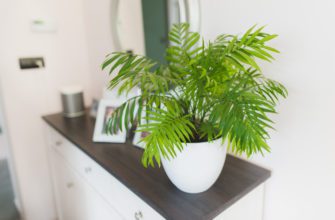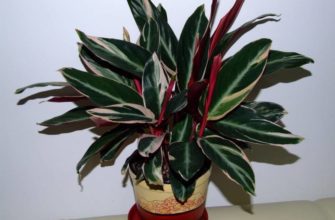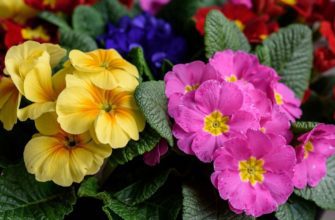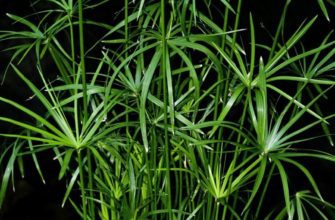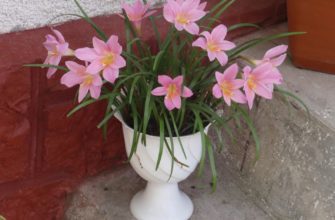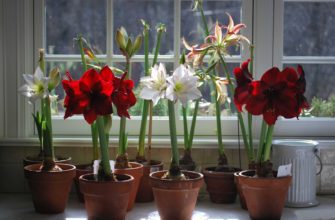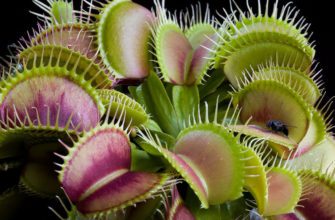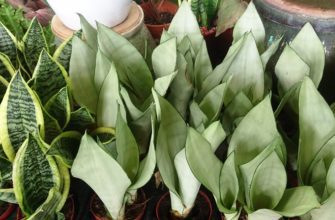Clivia cinnabar is a fascinating indoor plant that has won the hearts of many gardeners thanks to its bright and unusual flowering. This exotic flower not only decorates interiors with its magnificent appearance, but also has certain care requirements. In this article, we will consider the origin, features and, of course, give recommendations on caring for Clivia cinnabar at home. Get to know this wonderful plant better, and perhaps it will become a new decoration for your home or office.
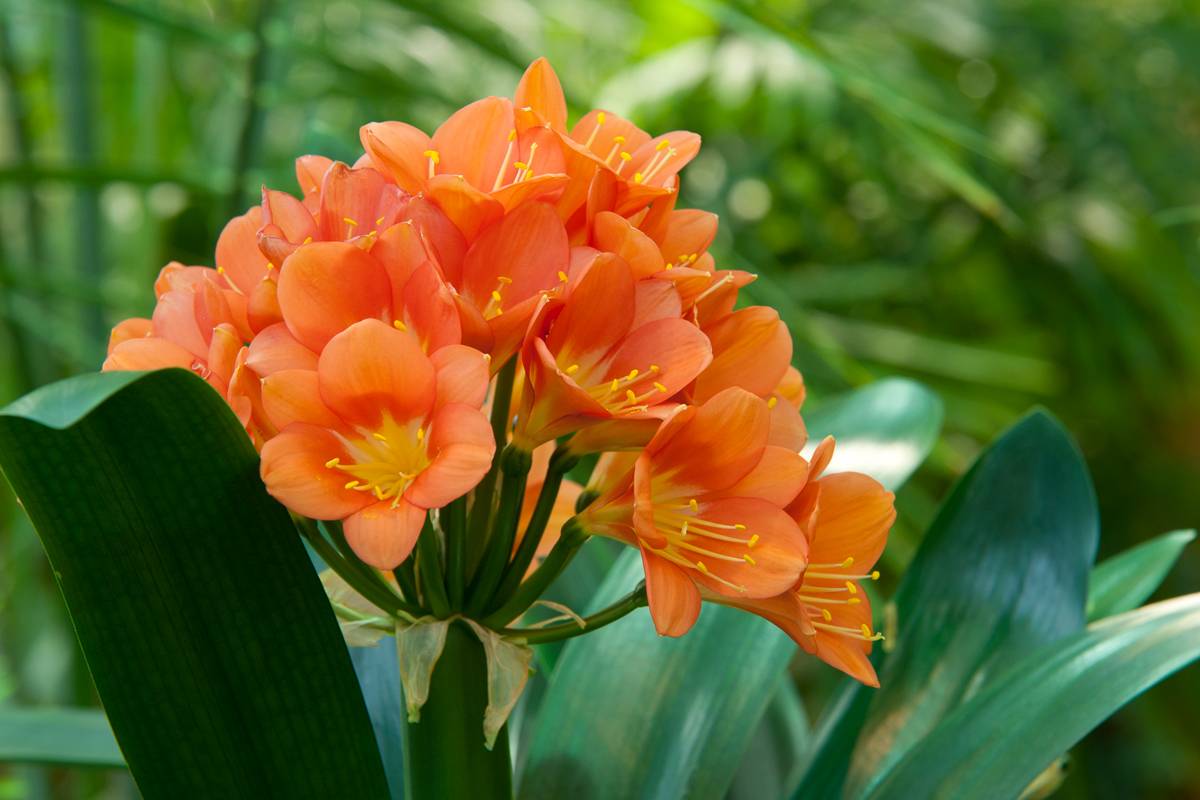
Origin and distribution of Clivia cinnabar
Clivia miniata, also known by its scientific name, is a member of the Amaryllidaceae family. It is native to South Africa, where it grows primarily in damp, shady forests and scrubland. These conditions have determined the plant's characteristics, such as its tolerance of shade and preference for cooler climates.
Over time, Clivia cinnabara became a popular houseplant in many parts of the world due to its beautiful cinnabar flowers and relative ease of care. In the 19th century, it was brought to Europe, where it quickly gained popularity among flower growers and gardeners.
Currently, Clivia cinnabar is grown in many countries around the world, both in open ground in regions with a suitable climate, and indoors as a houseplant. Its attractive appearance, resistance to various conditions of maintenance and long flowering make it a welcome guest in the homes of many gardeners.

Description of appearance
Clivia cinnabar is a perennial herbaceous plant with an expressive appearance that decorates interiors with its bright flowers and rich greenery.
- Leaves: The leaves are narrow, ribbon-like, reaching a length of 30-50 cm. They grow in bunches from the rhizome and form a beautiful rosette. The color of the leaves is dark green, smooth, with a waxy coating.
- Flowers: The plant's flowers are its main decoration. They are collected in dense umbrella-shaped inflorescences at the top of a long peduncle. Each inflorescence can include from 12 to 20 flowers. The flowers themselves have a beautiful cinnabar-orange hue, although there are also varieties with yellow or red flowers. The shape of the flowers is funnel-shaped, the petals of the flowers are open and slightly bent at the ends.
- Fruit: After flowering, the plant produces bright red berries, which also serve as a decorative element of the plant.
- Root system: The roots of clivia are fleshy and serve to accumulate moisture. This allows the plant to withstand short periods of drought.
Overall, Clivia cinnabara is a plant with lush greenery and bright, noticeable flowers that can become a real decoration of any room. Its appearance attracts attention and creates a feeling of tropical exoticism.
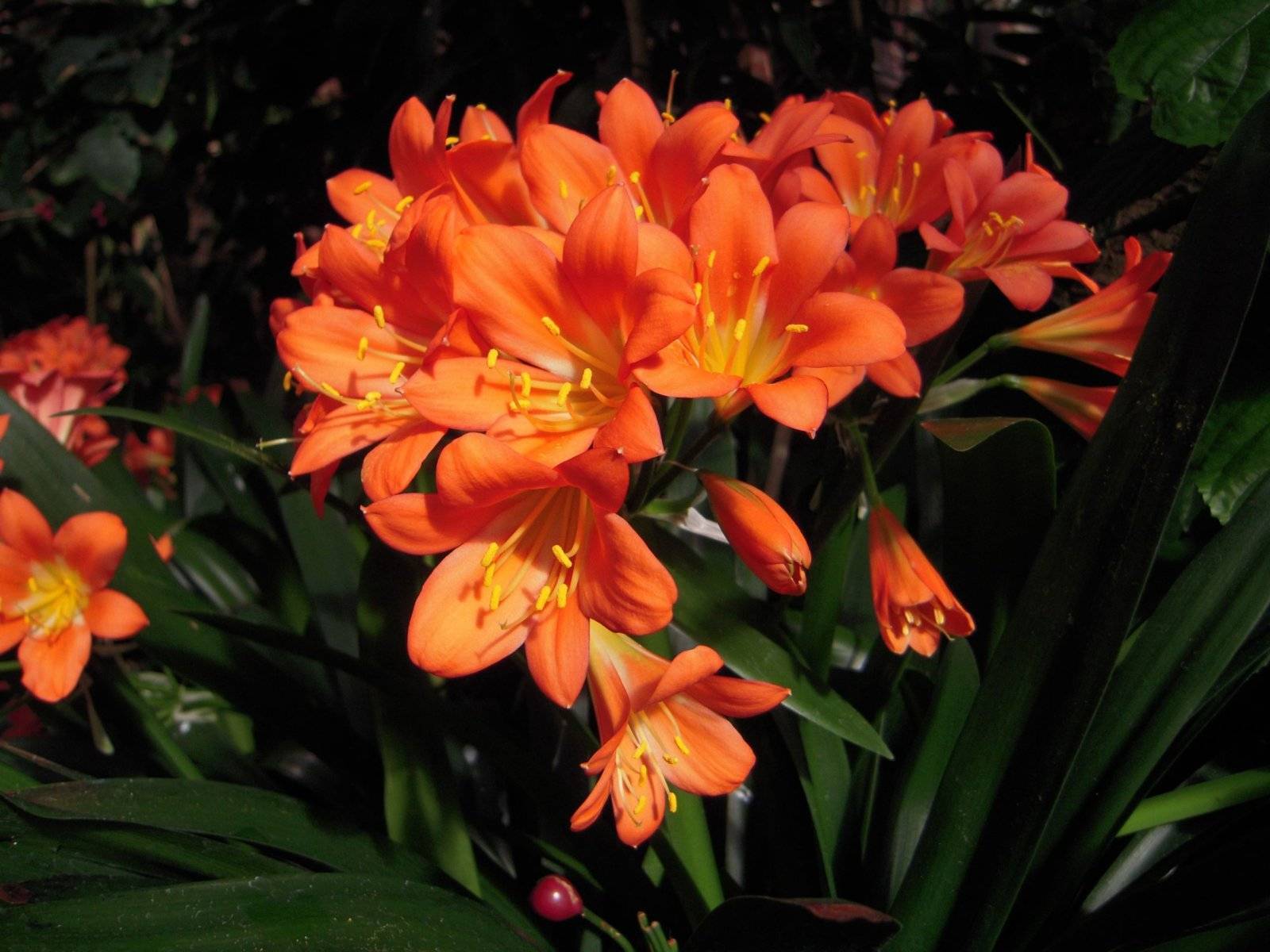
Features of flowering
The flowering of Clivia cinnabar is a truly magnificent spectacle, which makes this plant so popular among gardeners. Let's consider the key features of this period in the plant's life:
- Flowering time: Typically, clivia begins to bloom in late winter or early spring. Depending on the conditions of maintenance and care, the flowering period may vary slightly.
- Duration: Clivia cinnabara can bloom for 3 to 6 weeks, making it one of the longest blooming indoor plants.
- Color: The most common flowers are cinnabar or orange, but there are also selected varieties with yellow, fawn or even red flowers.
- Inflorescences: Flowers are collected in umbrella-shaped inflorescences on the top of a strong peduncle. Each inflorescence can contain up to 20 flowers.
- Aroma: Despite the striking external resemblance to some aromatic plants, the flowers of Clivia cinnabara do not have a strong scent. However, some selective varieties can emit a weak pleasant aroma.
- Post-flowering: After flowering, decorative red berries are formed, which also decorate the plant and maintain its decorative appearance.
To stimulate abundant flowering of clivia, it is recommended to provide it with a dormant period during the cold season, reducing watering and providing the plant with cool conditions.
In conclusion, the flowering of Clivia cinnabar is a special time that turns the plant into a bright star among indoor plants, attracting attention with its exotic and bright appearance.
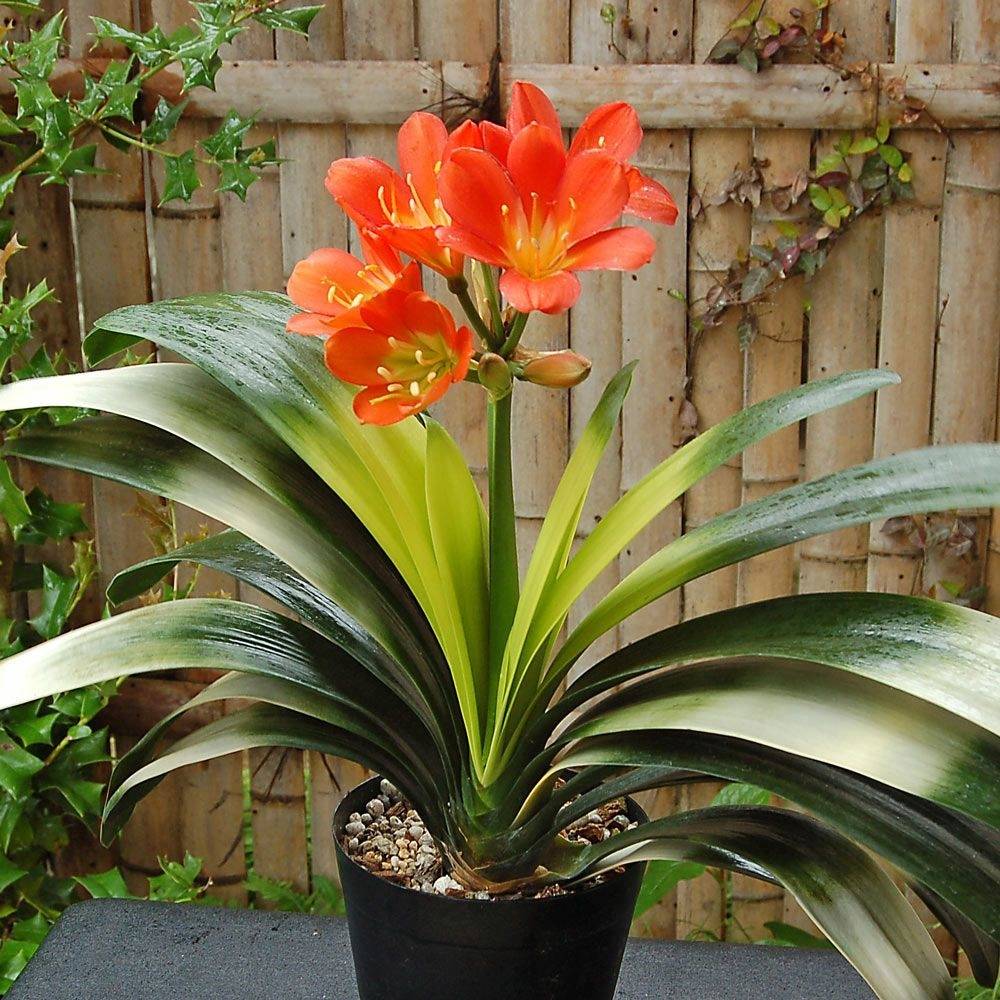
Caring for Clivia Cinnabar at Home
Caring for Clivia cinnabar does not require any special skills, but there are a number of recommendations that will help keep the plant healthy and ensure its regular and abundant flowering.
- Lighting: Clivia prefers bright, diffused light. Direct sunlight can cause leaf burns. If possible, place the plant on an east or west window.
- Temperature conditions: In the warm season, the optimal temperature for the plant is 18-24°C. During the dormant period (autumn-winter), it is recommended to keep the plant at a temperature of 10-15°C.
- Watering: Water the plant when the top layer of soil is dry. It is important to avoid stagnant water in the pot, as this can lead to root rot.
- Humidity: Clivia feels good in normal room humidity, but in hot weather additional spraying of leaves may be required.
- Top dressing: During the period of active growth and flowering (spring-summer), the plant can be fertilized once a month with a weak solution of mineral fertilizers for flowering indoor plants.
- Transfer: Repot the plant about once every 2-3 years. The plant prefers its roots to be a little cramped in the pot, so choose a pot just a couple of centimeters larger than the previous one.
- Diseases and pests: Like many other plants, clivia can be attacked by pests such as spider mites or scale insects. Regular inspection of the plant and timely measures will help prevent problems.
- Rest period: To encourage flowering, reduce watering during the winter months and provide the plant with cooler conditions.
By following these recommendations, you will be able to enjoy the bright and abundant flowering of your Clivia cinnabar year after year!
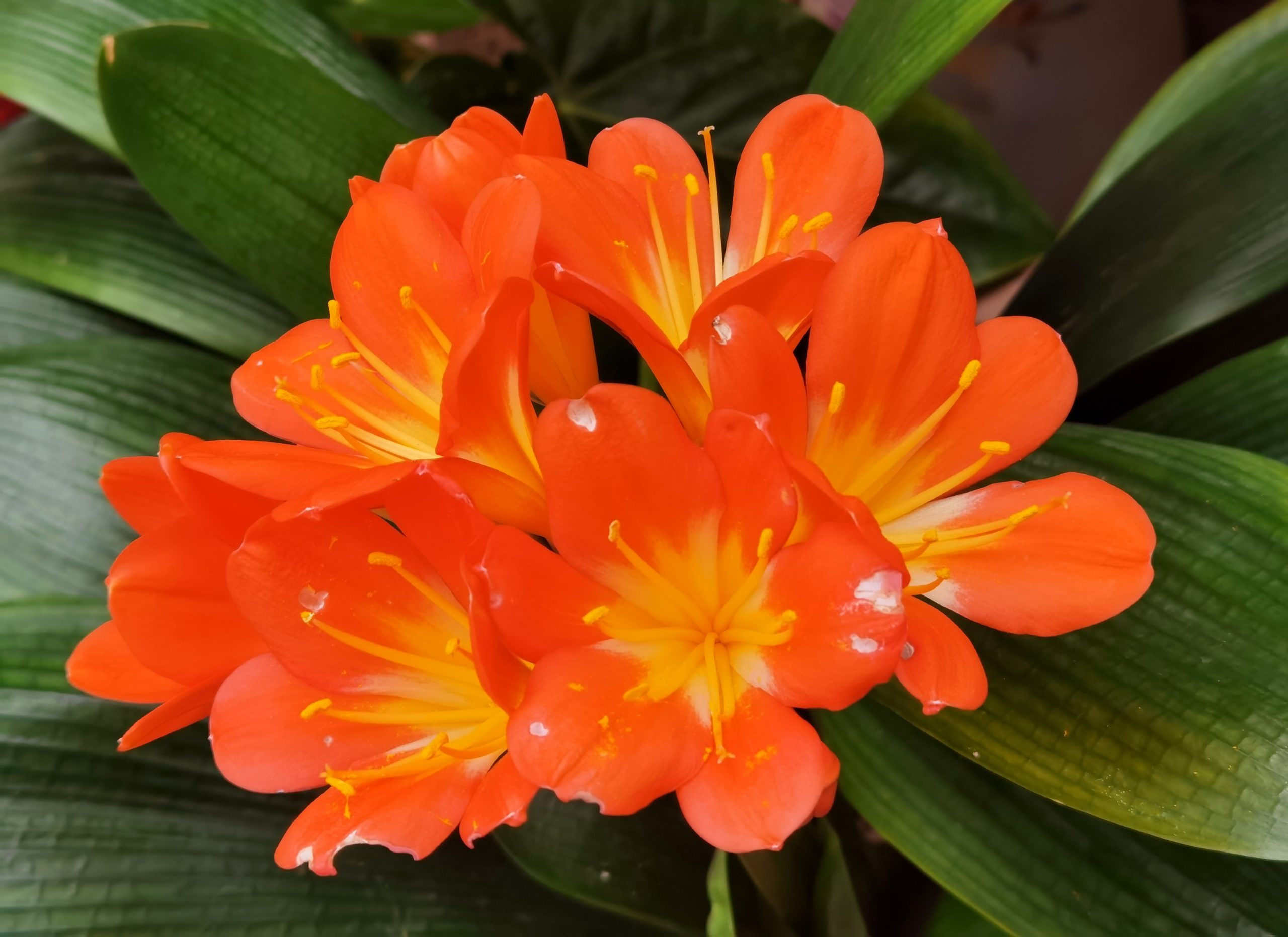
Control of possible pests and diseases
Like many houseplants, Clivia cinnabar can become the object of attention of various pests and diseases. To ensure its healthy existence, you should know how to resist these troubles.
- Spider mite: This is a small pest that usually appears in dry air. A fine web can be seen on the plant, especially on the back of the leaves. To combat it, spraying with acaricides and humidifying the air around the plant is recommended.
- Scale insect: Small brown or yellowish spots on the leaves may indicate the presence of scale insects. To eliminate the problem, you can use insecticides or a solution of soap and water to wipe the leaves.
- Aphid: Small green or black insects that usually congregate on new shoots and inflorescences. They can be removed by spraying the plant with a weak solution of insecticide.
- Root rot: If you notice that the leaves of your clivia are turning yellow or wilted, it may be due to root rot due to overwatering. Reduce the frequency of watering and make sure the pot has good drainage.
- Leaf spots: If spots appear on the leaves, the cause may be a fungal disease. Remove the affected parts and spray the plant with a fungicide.
- Prevention: Regular inspection of the plant, maintaining optimal conditions and hygiene will help prevent most problems. Avoid over-watering the soil and ensure good ventilation.
In conclusion, proper care and timely intervention will keep your Clivia cinnabar in excellent condition, preventing attacks from pests and diseases.
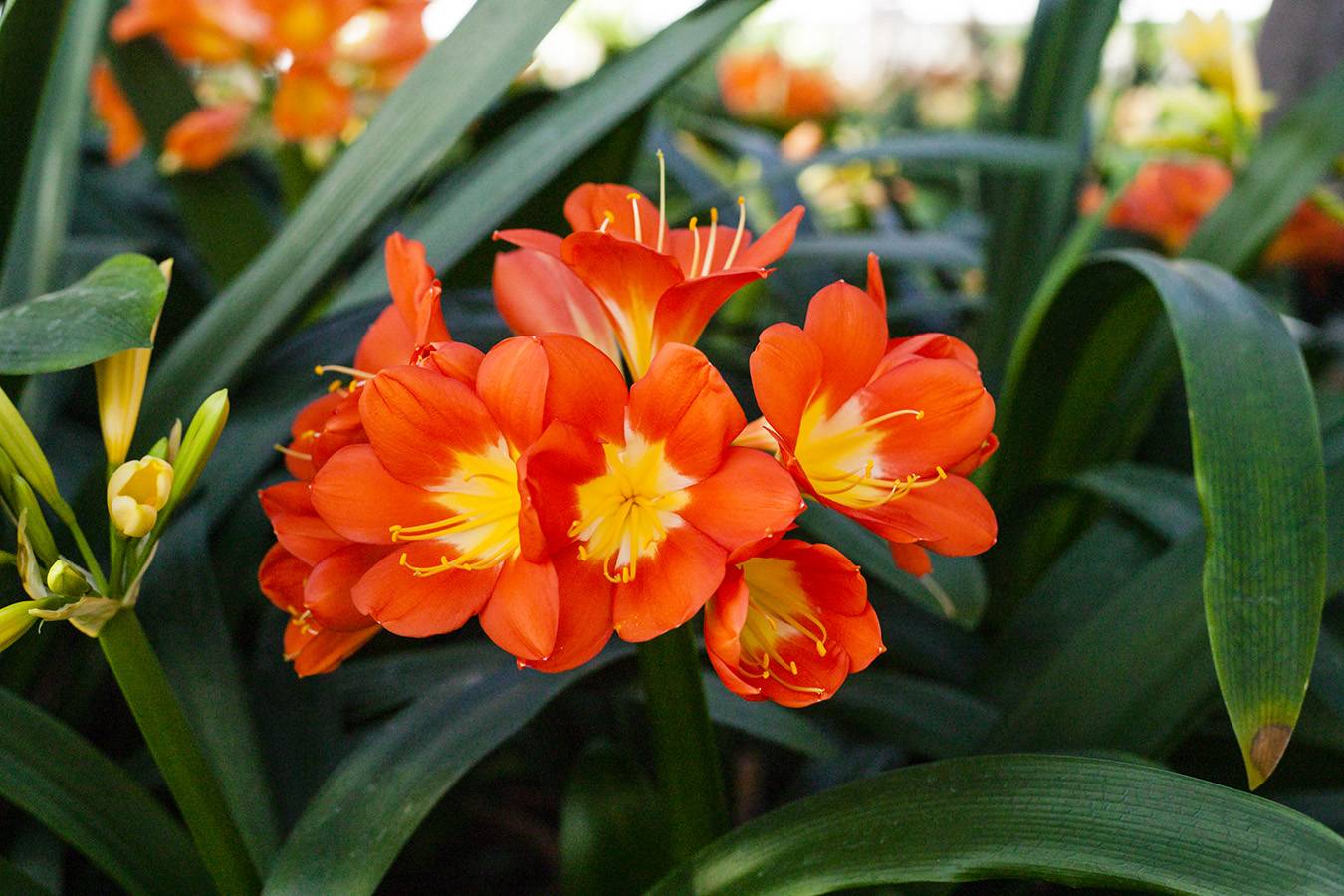
Tips and recommendations for care
By following these unique recommendations, you can provide your Clivia cinnabar with optimal conditions for growth and flowering, enjoying its beauty for years.
Conclusion
Clivia cinnabar is a real decoration for any interior, combining exotic beauty and extraordinary flowering. By caring for this plant properly and following the recommendations, you can achieve long and abundant flowering.
We hope that our article has helped you get to know this amazing flower better and given you an understanding of how to care for Clivia cinnabar so that you can enjoy its beauty for many years to come.

